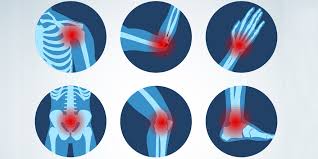Inflammation is a word that seems to be very common in our lives, a sore throat, a long bag on the face is inflamed, colds and fevers have to be anti-inflammatory, as well as a variety of dermatitis, pharyngitis, rhinitis, keratitis, tenosynovitis, pneumonia, gastritis, intestinal inflammation …… , it can be said that any part of the human body, any lesion, may be related to inflammation. It has been suggested that chronic inflammation over a long period of time can lead to aging and wrinkles. So what exactly is inflammation? How does it contribute to the development of aging and wrinkles in the human body? How to reduce inflammation in the body?
What is Inflammation
Inflammation is the body’s natural response to infection, injury or irritation. It is a complex biological process involving immune cells, blood vessels, tissues and various signaling molecules. The purpose of inflammation is to protect the body, remove dead cells and pathogens, and promote repair of damaged tissue.

The relationship between inflammation and the immune system
The immune system is a defense mechanism of the body responsible for recognizing and removing foreign pathogens such as bacteria, viruses, and parasites, as well as monitoring and dealing with damaged or abnormal cells. Inflammation is a biological process that occurs when the immune system responds to a potential threat and is characterized by the following:
Inflammation involves the activation and interaction of a variety of immune cells (e.g., macrophages, neutrophils, lymphocytes) and immune mediators (e.g., cytokines, chemokines, complement system).
Inflammatory mediators such as cytokines and chemokines can attract immune cells to migrate from the bloodstream to affected tissues, and these cells are involved in pathogen clearance and tissue repair.
In some cases, immune cells activated during inflammation can form memory cells that provide a rapid response to the same threat in the future.
The immune system is also responsible for regulating the inflammatory response to prevent excessive tissue damage. Resolution of inflammation involves the removal of dead cells and pathogens, as well as repair and regeneration of damaged tissue.
If inflammation persists, it may become chronic, which can lead to tissue damage and a variety of diseases, including autoimmune diseases and chronic infections.
Dysregulation of the immune system may lead to inappropriate inflammatory responses such as allergic reactions or autoimmune diseases, conditions in which the immune system incorrectly recognizes its own tissues as foreign threats.
The immune system protects the body from pathogens through inflammatory processes and promotes recovery from injury. However, when the inflammatory process is imbalanced, it can also lead to disease and tissue damage.
The Connection and Difference Between Inflammation and Allergies
We know that allergies are also caused by the immune system, so what is the difference and connection between inflammation and allergies?
First of all, inflammation is a natural reaction of the body to injury or infection that manifests itself as redness, swelling, heat, pain and dysfunction. It can be infectious inflammation caused by infection or non-infectious inflammation caused by other factors such as physical and chemical factors.
Allergies are hypersensitivity reactions induced by immune mechanisms, triggered by allergens and can be mediated by humoral (antibody) or cellular immune mechanisms. Allergies have a genetic predisposition, whereas inflammation does not.
Both inflammation and allergy involve activation of the immune system and both may involve the release of inflammatory mediators such as histamine, prostaglandins, leukotrienes, etc.
Allergic reactions, especially type I hypersensitivity (e.g., to certain foods, pollens, or medications), can lead to inflammation. This is because after the allergen enters the body, the immune system produces specific IgE antibodies that trigger an inflammatory response when re-exposed to the same allergen.
Although inflammation and allergies can be caused by different factors, they may produce the same cytokines and mediators, such as histamine and leukotrienes, during their occurrence.
So, while inflammation is a broader concept of the body’s natural response to various injuries and infections, allergy is a specific type of immune response, usually associated with IgE antibodies. The two may overlap in clinical presentation and cytokine release, but there are differences in their triggers and mechanisms.
Factors that cause inflammation
Inflammation can be caused by a variety of factors that trigger the body’s immune response, leading to inflammation.
Infection: microbial infections such as bacteria, viruses, parasites or fungi are common causes of inflammation.
Physical injuries: such as cuts, bumps, or burns that activate the body’s inflammatory response to repair damaged tissue.
Chemical irritation: Certain chemicals, such as toxins, drugs or industrial chemicals, can irritate tissues and cause inflammation.
Autoimmune response: In autoimmune diseases, the immune system mistakenly attacks the body’s own tissues, causing inflammation.
Allergic reaction: An overreaction of the immune system to certain substances (allergens), such as pollen, food, and certain medications.
Ultraviolet radiation: Overexposure to ultraviolet rays from the sun can damage the skin and cause inflammation.
Mechanical stress: Prolonged or excessive mechanical stress, such as standing or sitting for long periods of time, can lead to certain types of inflammation.
Obesity: Being overweight or obese can cause chronic low-grade inflammation, which has been linked to a variety of health problems.
Metabolic disorders: metabolic diseases such as diabetes can lead to an inflammatory response in the body.
Environmental factors: Environmental factors such as air pollution, tobacco smoke, and certain food additives can also lead to inflammation.
Psychological factors: chronic stress and emotional problems can affect the immune system, which in turn can lead to inflammation.
Aging: As we age, the body’s ability to regulate inflammation may decline, leading to a chronic inflammatory state.
Drug reactions: certain medications may cause drug-induced hepatitis or other types of inflammatory reactions.
These factors can act individually or in combination to trigger an inflammatory response in the body. Inflammation itself is a protective mechanism, but when it becomes excessive, inappropriate, or lasts too long, it can lead to tissue damage and disease.

How Chronic Inflammation Leads to Aging
The effects of chronic inflammation are multifaceted and involve damage to cells, tissues and organs as well as imbalances in repair processes. Example:
Collagen degradation: chronic inflammation can increase the production of matrix metalloproteinases (MMPs), enzymes that degrade collagen and elastin in the skin, leading to a loss of elasticity and firmness, wrinkles and sagging.
Oxidative Stress: Reactive Oxygen Species (ROS) and Reactive Nitrogen Species (RNS) produced in the inflammatory response can damage the DNA, proteins and lipids of skin cells, accelerating the skin aging process.
Cellular senescence: Chronic inflammation can cause skin cells to enter a senescent state where these cells lose their ability to divide, accumulate and release inflammatory factors, and form a senescence-associated secretory phenotype (SASP) that further exacerbates inflammation.
Hyperpigmentation: Inflammation can stimulate melanocytes to produce more pigment, leading to hyperpigmentation and pigmentation formation.
Decreased skin barrier function: Chronic inflammation can damage the skin barrier, making it more vulnerable to external environmental factors and accelerating skin aging.
In addition, chronic inflammation can indirectly contribute to the aging of the organism by producing the following results
Systemic inflammation: Chronic inflammation can lead to a systemic inflammatory state that affects the function of multiple organs and systems, accelerating the aging process.
Metabolic disorders: chronic inflammation is associated with metabolic diseases such as insulin resistance, diabetes, and cardiovascular disease, which themselves accelerate aging.
Decreased immune function: Chronic inflammatory responses can weaken the immune system, making it difficult to respond effectively to new threats and increasing the risk of infection and disease.
DNA damage and repair defects: oxidative stress and DNA damage caused by chronic inflammation may lead to cellular dysfunction and aging if repair mechanisms cannot keep up with the rate of damage.
Cell death: Inflammation-induced cell death (e.g., apoptosis and necrosis) can lead to tissue atrophy and decreased function.
Impaired stem cell function: Chronic inflammation may affect the function and regenerative capacity of stem cells that are responsible for tissue repair and regeneration.
Neurodegeneration: Chronic inflammation has been linked to neurodegenerative diseases (e.g., Alzheimer’s disease), which are associated with aging and cognitive decline in the brain.
Endocrine system effects: Chronic inflammation can interfere with the normal functioning of the endocrine system, such as affecting the production and regulation of growth hormone and sex hormones, affecting overall health and aging.
Chronic inflammation is a complex process that can affect the health and aging of the skin and the body on multiple levels. Therefore, controlling and managing chronic inflammation is important in slowing down the aging process.
How to prevent inflammatory aging
Sunscreen: Use sunscreen to protect your skin from UV rays, which can cause skin inflammation and accelerate aging.
Cleanse gently: Use gentle cleansing products and avoid strong chemicals that can irritate the skin or damage the skin barrier.
Moisturize: Keep your skin hydrated and use a moisturizer to help maintain skin barrier function.
Anti–oxidation: Use skin care products that contain antioxidants (e.g., vitamin C, vitamin E, selenium, etc.) to neutralize free radicals and reduce oxidative stress.
Healthy eating: Adopt a diet rich in fruits, vegetables, whole grains, nuts and healthy fats, and reduce your intake of processed and high-sugar foods.
Regular exercise: Engage in regular physical activity such as brisk walking, swimming or yoga to reduce inflammatory markers and boost the immune system.
Weight control: Maintain a healthy weight, as obesity is associated with chronic inflammation and multiple chronic diseases.
Getting enough sleep: Getting enough sleep helps regulate the body’s immune response and inflammatory processes.
Reduce stress: Take stress-reducing measures such as meditation, deep breathing, or positive thinking exercises, as chronic stress can increase inflammation.
Allergen avoidance: If you are allergic to certain substances, avoid exposure to these allergens to reduce allergic reactions and inflammation.
Environmental controls: Reduce exposure to environmental pollutants such as tobacco smoke, air pollutants and certain chemicals.
Personal hygiene: Maintain good personal hygiene to prevent infection.
Now we know how to reduce inflammation in the body, just do it. Have a nice day~~~ Nice everyday.
Natural skin ati-inflammation ingredients:







